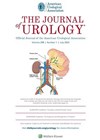
Journal Reviews
Robot-assisted ureterocalicostomy
Ureterocalicostomy was first introduced by Neuwirt (1947) and further described by Jameson et al. (1957) as an alternative procedure for repair of pelviureteric junction (PUJ) obstruction associated with an intrarenal pelvis. Performing ureterocalicostomy for PUJ repair has been suggested in...
Hypospadias – detecting your complications
All hypospadias surgeons will encounter complications. They are estimated to occur in around 10% of distal hypospadias repairs and more than 50% for proximal forms. Some controversy exists regarding the length of follow-up needed to detect them. Some series have...
Hypospadias – can urologists achieve the unachievable?
US News & World Report (USNWR) provide rankings on a wide range of topics (education, health, money, travel, cars and law firms). In terms of healthcare, they suggest that their rankings (based on metrics) are a tool that can help...
Redo orchidopexy
Cryptorchidism, or the undescended testis, is perhaps the most common genital anomaly in males. Historical success rates are approximately 90% depending on the preoperative location and technique used. Iatrogenic cryptorchidism can also occur in up to 2% of cases following...
ESWL and URS for treatment of paediatric urolithiasis
Tejwani et al. have undertaken a comparative effectiveness study to characterise differences in procedure frequency, postoperative re-admissions and emergency room (ER) visits, and repeat treatment rates for children (≤18 years) with urolithiasis who underwent initial intervention with extracorporeal shock wave...








